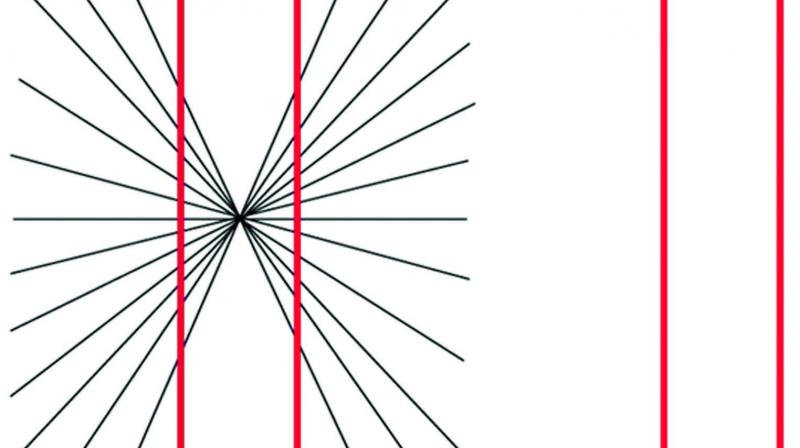Mind Science: Why optical illusion happens
What is the Hering Illusion?

Today, let us look at a simple optical illusion and try to understand the phenomenon a little better. Our choice is the Hering illusion, first described by German physiologist Ewald Hering in 1861. We will ask two questions about it, namely “what” and “why”.
What is the Hering Illusion? Consider the two pairs of red lines in the figure; the pair on the left is placed on a background of several black lines, whereas the pair on the right does not have any such background. The illusion is that the two red lines appear curved, whereas they are actually parallel lines, like those on the right. In other words, the left pair is straight and parallel, but the black lines in the background create the illusion that they are curved.
Why do they appear curved? It has been one-and-a-half centuries since the illusion was first described. Since then, researchers have identified many possible causes. One explanation is that our mind has a tendency to over-estimate small (acute) angles; by estimating that the black lines meet the red ones at a larger angle than reality, an illusion of curved red lines is created. For the scientifically inclined reader, this tendency is in turn linked to a well-understood phenomenon called lateral inhibition.
The more recent explanation is that there is a gap of around 100ms (one-tenth of a second) between the time instant that our eyes see an image and our brain recognises what is seen. Whenever we look at a moving scene, our brain tries to compensate for this delay, by changing the image to look like how it might look 100ms later, so that our understanding about the image is in tune with the present.
In the Hering illusion, with all the lines meeting at the central point, our mind tends to think that we are moving forward and this switches on our brain’s prediction. If the red lines were indeed borders of vertical curtains that we would push away from the centre as we make our way forward — our brain thinks we will — they would indeed be curved in a future instant. Thus, our brain’s prediction mechanism makes them appear curved. For the right pair of lines, there are no black lines to make us think we are moving forward, and so, our brain does not try to predict.
Now, squint your eyes and look again at the left pair of red lines in the image. Does the curve slowly disappear? Do they start looking parallel, like the right pair? More on that later.
— Dr Deepak P is a computer scientist and academic staff at Queen’s University Belfast, UK. Feedback: deepaksp@acm.org

